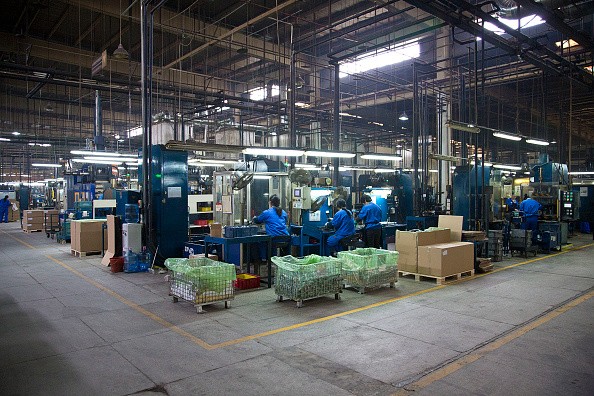he expansion of manufacturing in China for the seven consecutive months shows that Chinese economy is moving steadily as government data show, the Xinhua News Agency reported.
According to data from the National Bureau of Statistics (NBS) released on Wednesday, March 1, the manufacturing purchasing manager's index (PMI) posted 51.6 in February, 0.3 points higher than the previous month.
An above 50 reading shows expansion while below this number indicates contraction, the report said.
The reading this month has remained above 51 for five consecutive months, which show a steady expansion in the country's manufacturing sector, NBS statistician Zhao Qinghe said.
Meanwhile, Zhang Liqun, a researcher with the Development Research Center under the State Council, said that the recent reading is an indication of the economy's continued stabilization.
Key economic indicators such as those for trade and inflation showed a rebound that indicated a strong economy at the start of the year.
In trade, both exports and imports increased significantly, despite rising protectionist policies, a slow foreign demand and rise in production costs at home.
The country's producer prices soared in January while consumer inflation increased, which further indicates that economic growth is becoming more stable.
The production sub-index was at 53.7, 0.6 points higher than that in January. For new orders, the sub-index grew 0.2 points to 53, the data showed.
According to Zhao, strong growths in production and market demand recovery have both contributed to the increased production and new orders.
For the equipment manufacturing sector, the sub-index showed a three-year high expansion of 53.3 points, 1.7 points higher than the overall manufacturing industry.
According to Chen Zhongtao, an analyst at the China Logistics Information Center, some factors of Chinese economy showed signs of growth such as the increase in demand, rise in prices, better performance of businesses, restructuring and more jobs.
Based on the NBS data, the sub-index for production and business expectation climbed to 60 in February, which shows that many businesses have a positive outlook on the future.
On Tuesday, Feb. 28, Chinese leaders said that the manufacturing sector should focus more on quality as they increase quantity in manufacturing. The government also said that they would push to reduce prices and administrative fees in monopolized sectors including easing up of business burdens.
The NBS said that the service sector also showed stable growth, based on a separate survey, with non-manufacturing PMI posting 54.2, for the fifth straight month.
Based on the survey, the fastest growing service sectors include telecommunication and satellite transmission service, Internet and software information technology, railway transport, finance and insurance while retail, road transport, catering and property have reduced growths.
More than half of China's economy and majority of its growth were contributed by the service sector last year as rising income enabled Chinese consumers to spend more on food, hotels and travel services.
In 2016, China's GDP growth rose to 6.7 percent, although lower in recent year but still within the government target range.




























